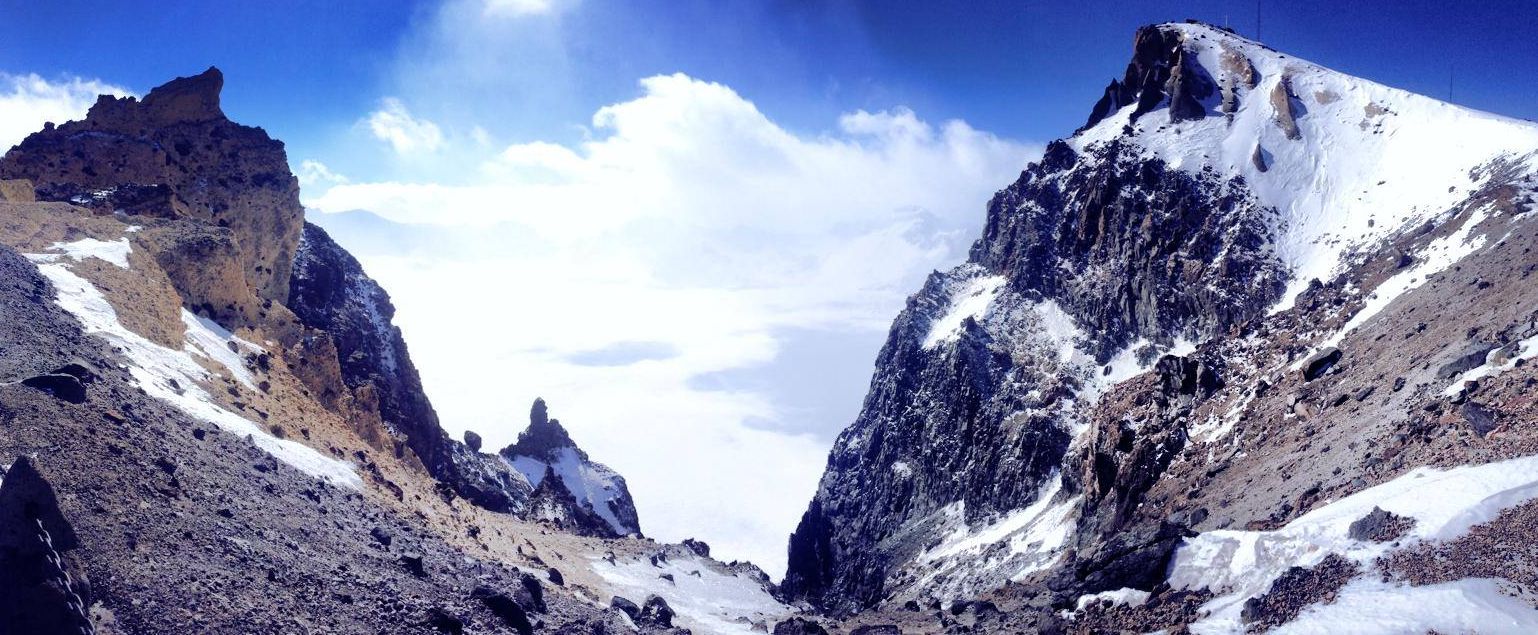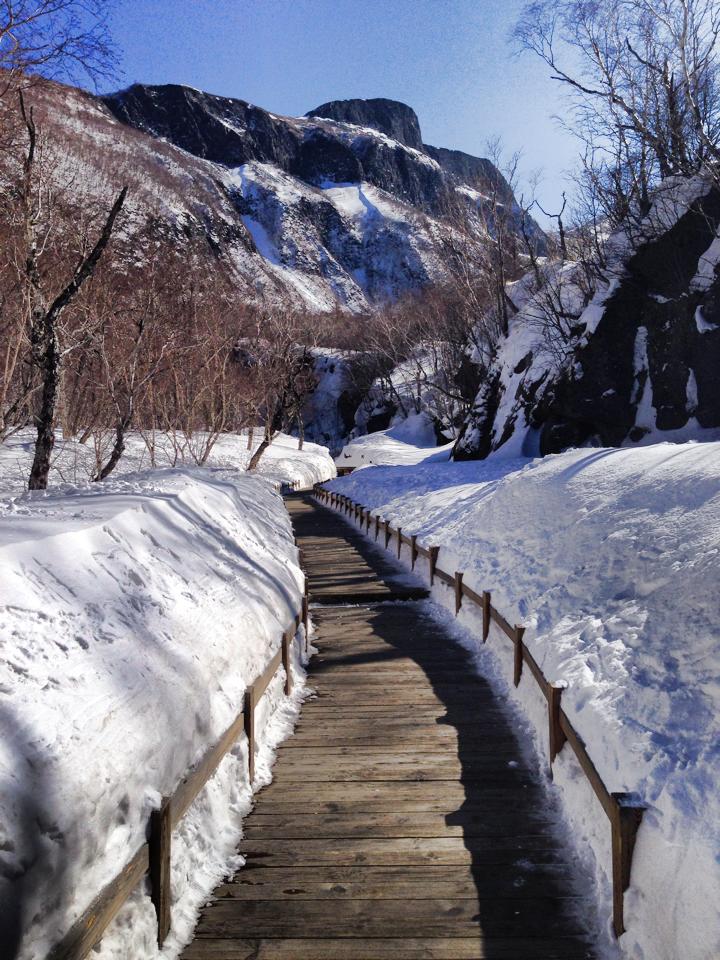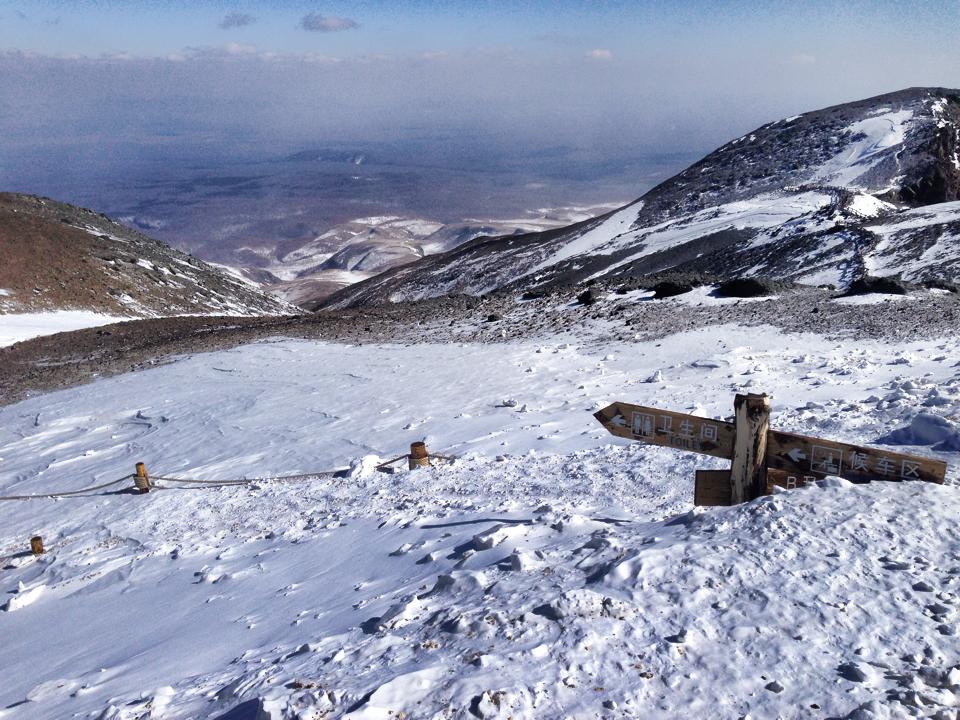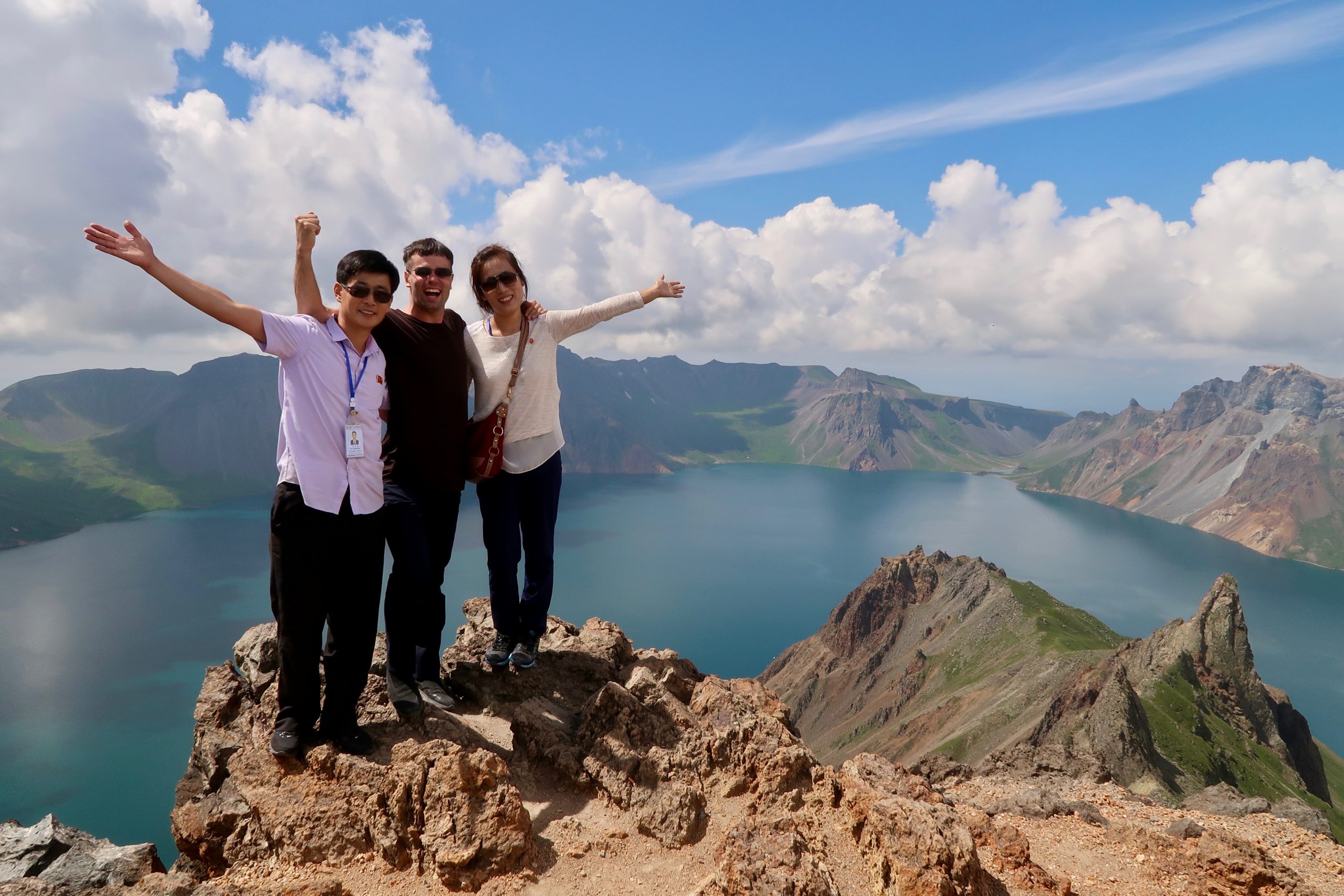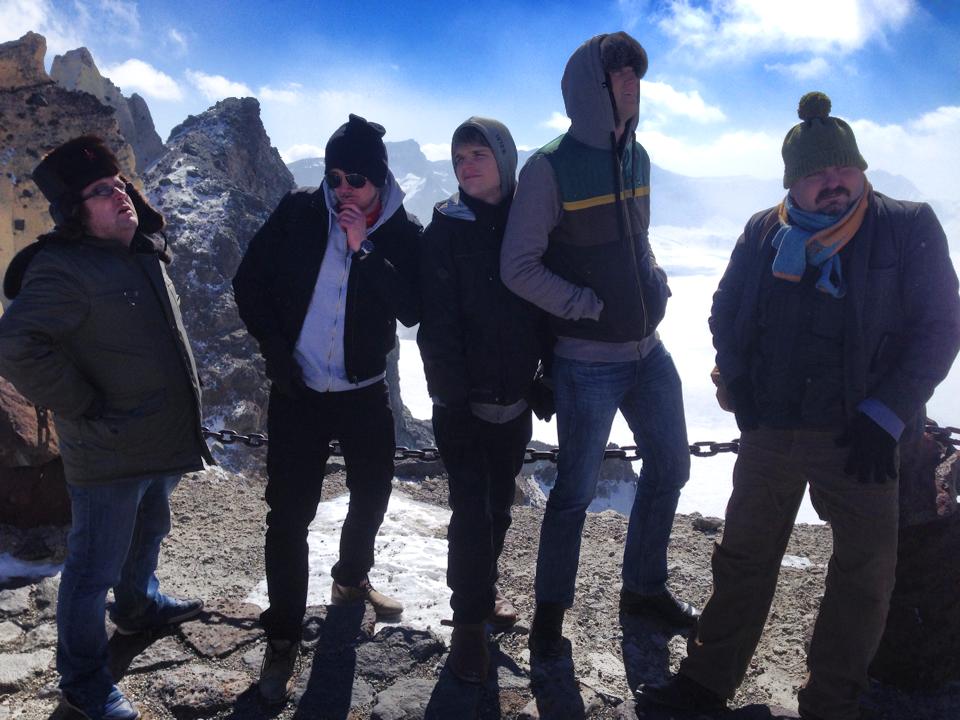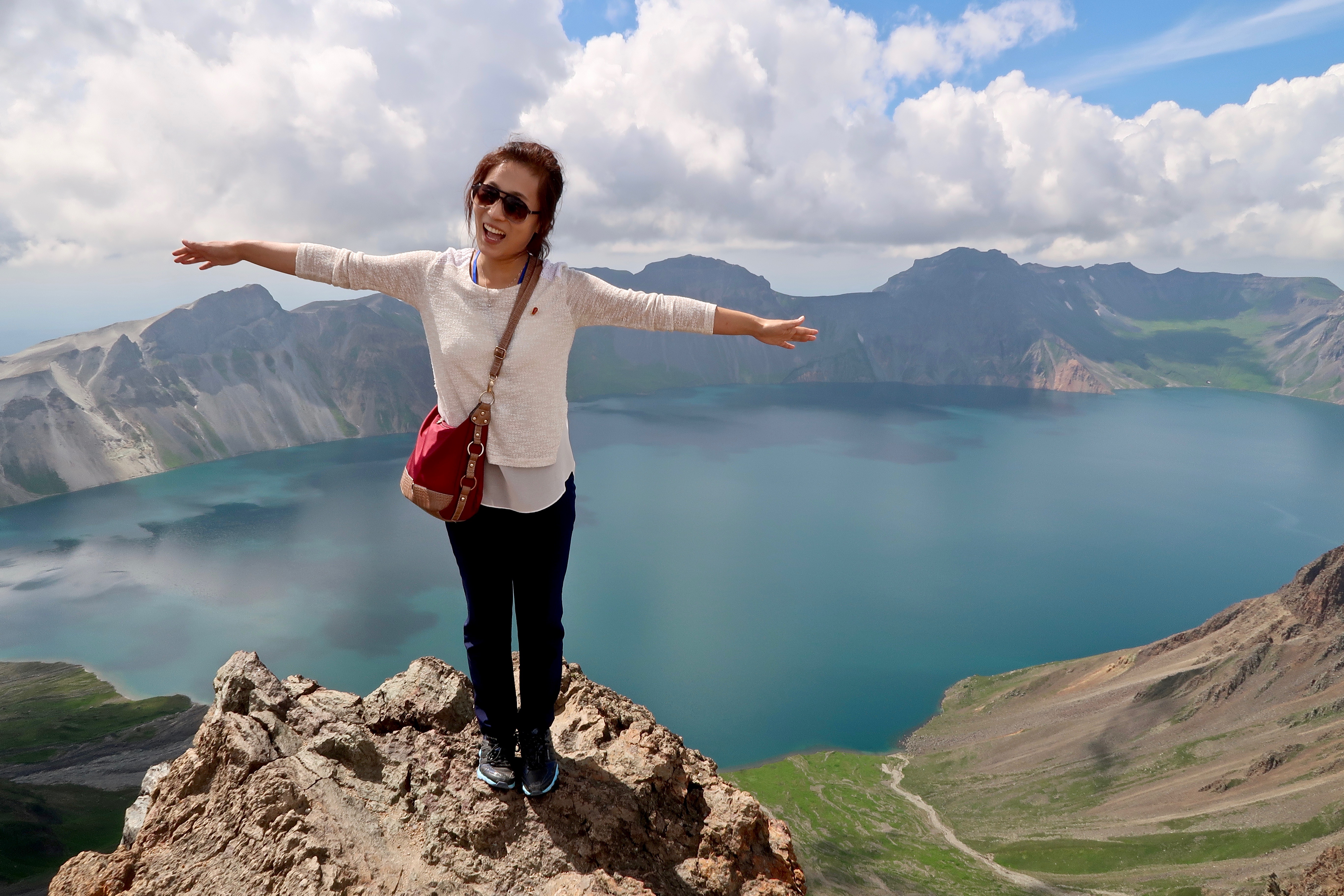Introduction to Mount Paektu
Whilst Mt Paektu (also spelt Peakdu or known as Paektusan or Paekdusan to the Koreans), is sacred to both North and South Korea and considered the mythological birthplace of the Korean people, it has much a deeper and more recent significance to North Koreans. To them, the mountain is not just a symbol of Korean ancestry but also one of the most significant symbols of the anti-Japanese revolution and the birthplace of the second leader Kim Jong Il. Mount Paektu has other more recent historical significance, too — being at the heart of a border dispute between Korea and China that dates back to the late 1800s.
Mt Paektu is also a tourist site for both countries, although as you can imagine it’s managed very differently on each side of the border. The reasons for its attraction as a tourist site in China is fairly straightforward — at 2750 meters it’s the tallest mountain on the Korean Peninsula and the North Eastern Region of China and tends to have a snow-covered peak most of the year.
The mountain features a stunning volcanic lake known as Heaven Lake or Lake Chon in Korean. The lake was caused by an eruption in AD 946 that rates among the 5 biggest volcanic eruptions in the last 5,000 years. North Koreans are also attracted to these beautiful natural features, but visiting the mountain is also considered part of the people’s revolutionary education. It’s quite common to see groups of university students, in particular, visiting the mountain dressed in replicas of the uniform of the Anti-Japanese revolutionaries.
Table of Contents
How to get to Mt Paektu?
Currently, the only way to get to Mount Paektu is to fly from Pyongyang to Samjiyon county . Usually, there is no regular flight so a chartered Air Koryo flight is the only option. The plane will depend on the size of the group but usually an Antonov An-24 is used; the same model we charter for our July Victory Day and Mt Paektu Tour. There is no road or rail access at the moment, though there are signs this may change in the future.
The other option, of course, is to visit from the Chinese side, which usually involves a combination of trains and bus (or private transport) depending on where you depart from. Our Borderlands tour is an affordable way to visit the mountain and various other points of interest along the China-North Korea border.
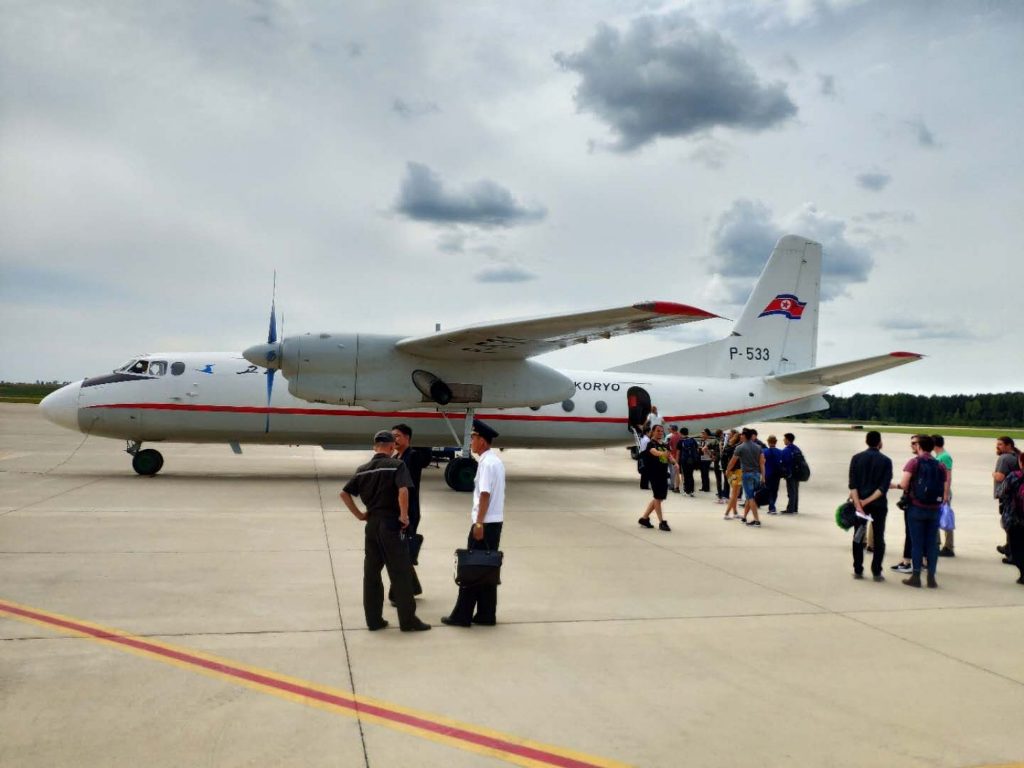
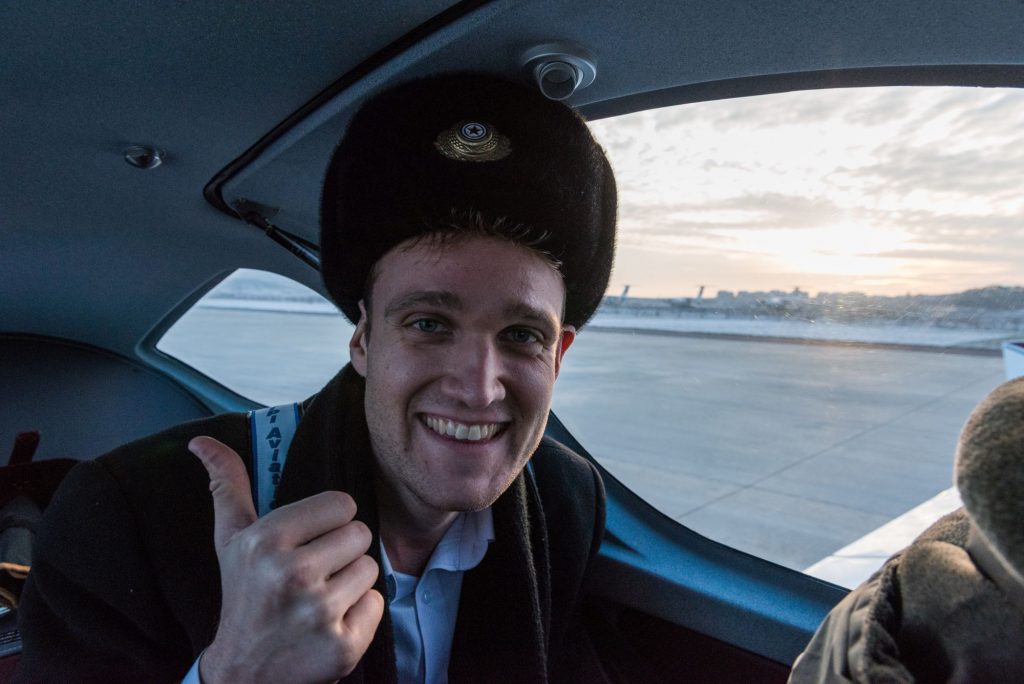
What to see at Mount Paektu?
On the Chinese side of the border, you can hike the mountain and see Heaven lake but also visit Changbai waterfall, hot springs, and the dense forest that surrounds the mountain. From the Korean side be prepared for a much more revolutionary experience.
You’ll first arrive in Samjiyon county by air, and it’s recommended to stay at least a night to improve your chances of a clear day at the peak and to avoid rushing about. You’ll also want to take the time to see the sights around Samjiyon.
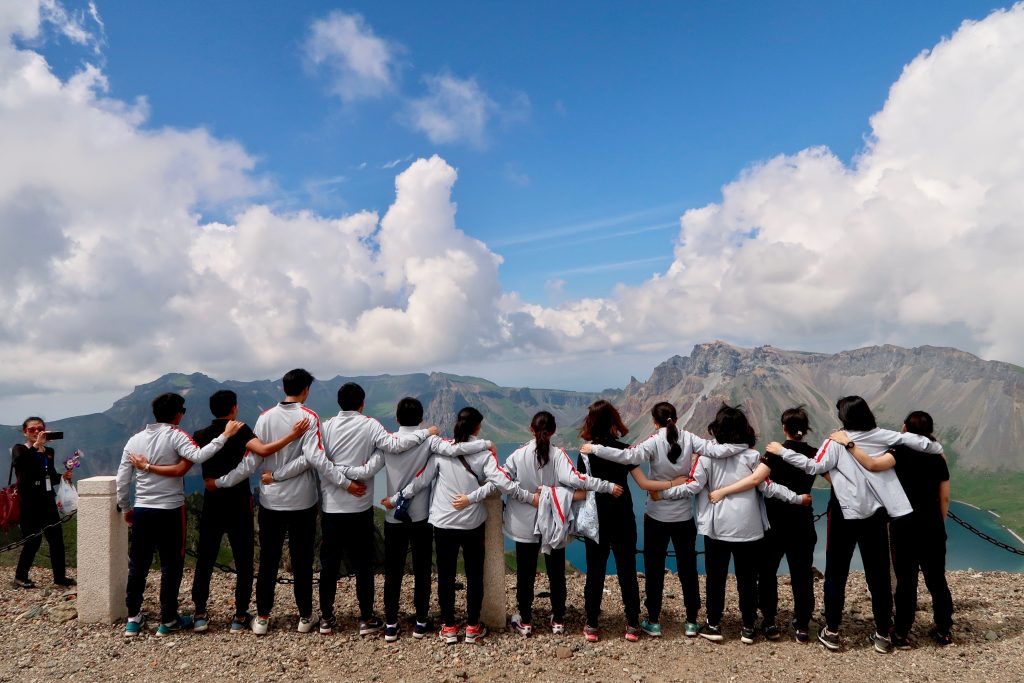
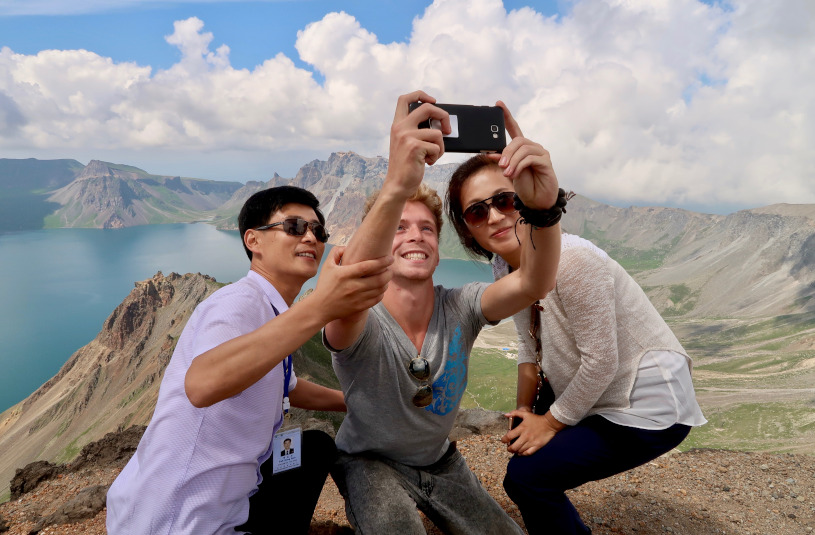
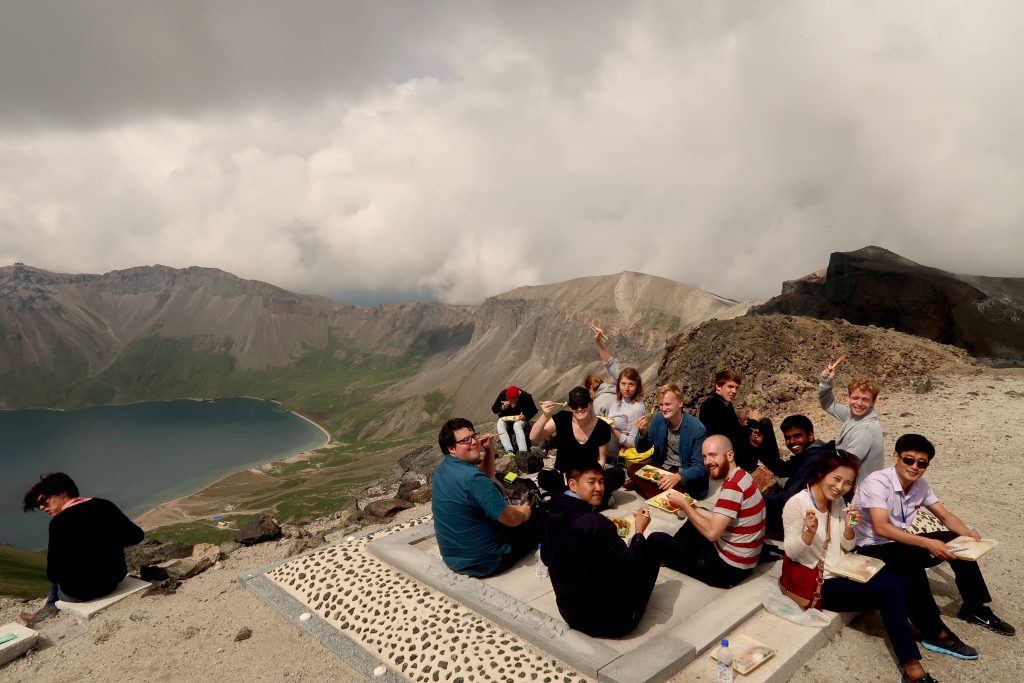
The Samjiyon Grand Monument
Built in 1979 to celebrate the 40th anniversary of the Battle of Pochonbo, the monument consists of four separate groups of statues including a large Bronze statue of a young General Kim Il Sung. With Lake Samji and Mt Paektu as the backdrop, it’s an impressive sight.
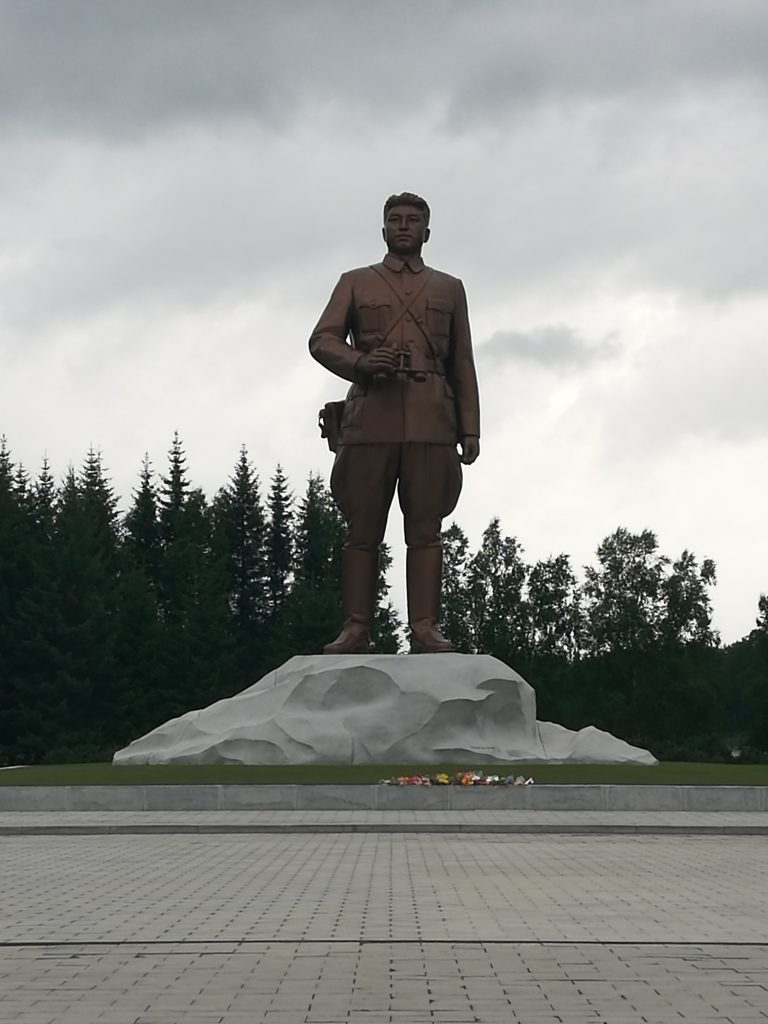
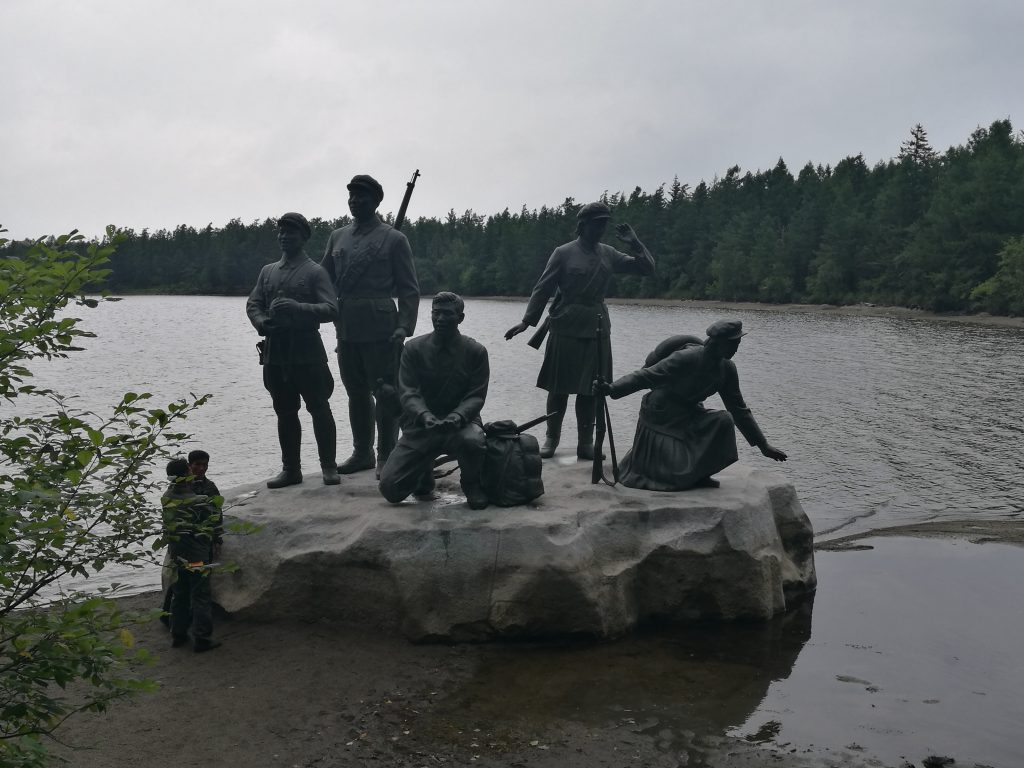
Samjiyon Revolutionary Museum
Learn about the local revolutionary activities of the leaders in the area, going back to the anti-Japanese war days. As with most revolutionary museums in the country, photography is not permitted inside the building.
Samjiyon Schoolchildren’s Palace
Like other schoolchildren’s palaces, this is the site for local kids who excel at their extra-curricular activities to attend classes and put on performances. In practice, however, visits here are tough to arrange and more often than not are canceled. With other much more interesting schoolchildren’s palaces throughout the country and time being short, it’s usually only worth scheduling for return visitors.
Samjiyon Military Palace of Culture
Another site that can be tricky to arrange, this is worth a visit if you stay longer than just one night in the region. Again, photography is not allowed inside the building.
Mount Paektu
Of course the mountain is the main event for most visitors and with the world’s deepest crater lake — and nearly untouched forest surrounding the peak — it’s definitely a breathtaking site, even if the historical significance of the mountain isn’t of interest. For those who enjoy a hike, it’s possible to hike up the final 3km of the mountain road, or hike down the steps to the crater lake/up to the highest point of Janggun Peak. There is also a funicular that travels the final 3km to the crater (Often closed to larger vehicles as the road is not in the best state) which usually costs around 5 euro for a return journey. There is also a cable car that travels from the crater summit down to the lake for those who don’t fancy the more than 2,000 steps (each way).
Be aware that, whilst not a massive mountain by many standards, it will be significantly colder at the peak even on a fine day and the winds can be intense. It’s good to bring a decent jacket, trousers and also sensible footwear if you intend to hike to the peak or down to the lake.
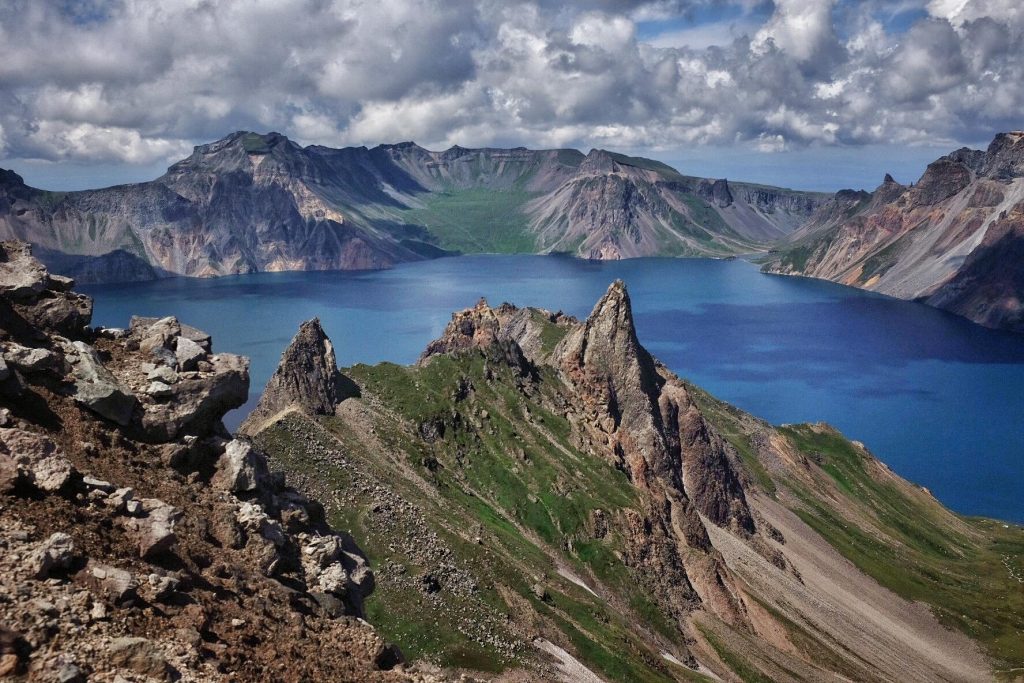
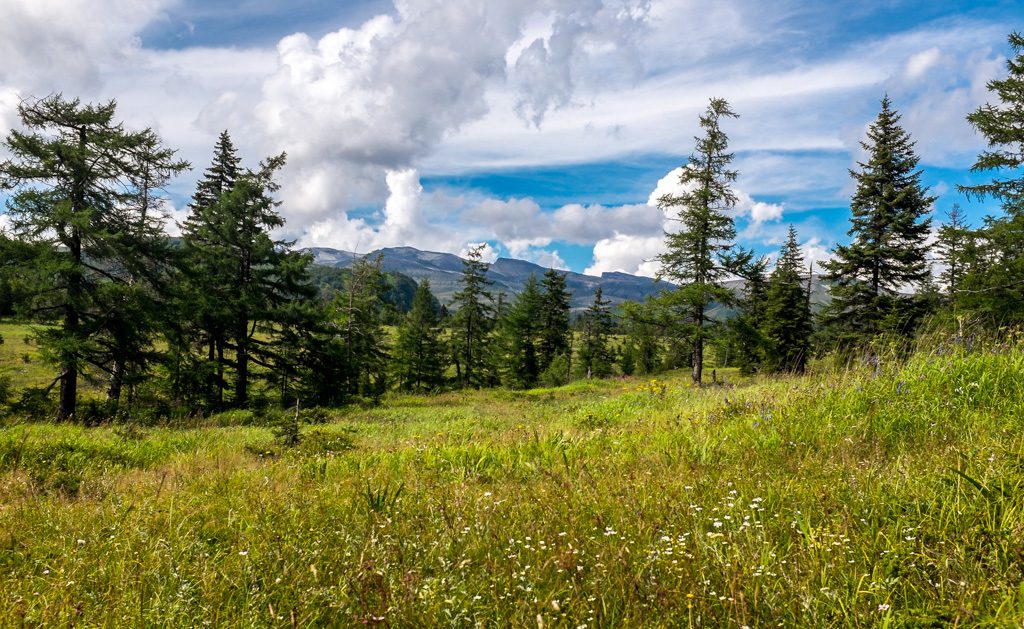
Rimyongsu Falls
The most impressive of the waterfalls on the Korean side, the waterfall flows all year round due to geothermal heat from the rocks (though visiting Mt Paektu from the Korean side in winter is generally not possible, so we’ve had to take the locals’ word for it). There is a pavilion with a great view of the Falls that’s also a great place to mingle with domestic tourists who will likely be visiting as well.

Sagimun and Hyongje falls
You’ll pass these either on the way to the mountain or on the way back depending on your driver and the road conditions. These small waterfalls are worth, at best, a quick photo stop.
Mt Paektu Secret Base Camp
Here you’ll see the humble log cabin where General Kim Jong Il was said to be born as well as Jong Il Peak- the highest point in the area and adorned with characters on granite stone that bears the name of the peak, itself named after General Kim Jong Il.
You may also want to sample the waters of Sobaek stream, where the revolutionary fighters and leaders themselves drank from, and you’ll also see plenty of ‘slogan trees’, a uniquely Korean form of showing one’s revolutionary spirit which is worth a blog of its own.
Accommodation
While locally published guidebooks may mention the Hyesan and Onsupyong hotels, the reality is that as a foreigner you’ll almost certainly be staying in the Begabong Hotel. With a very Shining-esque atmosphere, however, this is definitely not a bad thing, and with 122 rooms you won’t have to worry about overbooking. The hotel’s public areas can be a little chilly, but it’s often possible to organise an evening potato BBQ for extra charge. This is often worth it just to have somewhere warm to socialise!
Another option is camping in the forest near the hotel, but this is often more trouble than it’s worth and can’t always be arranged.

Restaurants
For now the restaurants in Samjiyon are limited to the hotel and a picnic lunch provided by the hotel. Ryangang province in general is a tough place to grow food or keep livestock, so meals will tend to be on the rustic side. If you have dietary limitations, it may be worth bringing food to supplement your local meals here.
Around Samjiyon
Whilst not always possible to arrange — it’s dependent on local conditions and permits — it may be possible to visit nearby Pochonbo and Taehongdan counties. Neither have much to offer and feature a significant amount of driving. However it can, at times, be possible to see the Monument to the Victorious Battle of Musan — a monument depicting General Kim Il Sung — that was built to replace an earlier monument in 2002. It’s also sometimes possible to continue into the Taehongdan town itself and visit potato fields and the potato-processing factory, where you can also buy a variety of potato-based foods and drinks. It’s also sometimes possible to eat in the local noodle house — unlike most of the country, the specialty is a potato-based noodle that is also popular in other northern provinces.
The other possibility is to visit Pochon county, only 1 km away from the river Amnok and the site of the famous battle of Pochonbo (there’s even a now retired band named after it). Once again you’ll see a statue of the President, though less awe-inspiring than its neighbours in Musan and Samjiyon. You’ll also see the former Japanese Police station and Administrative office with their battle scars, and perhaps the Pochonbo Revolutionary Museum. Getting permission to visit these counties is difficult and frankly, until nearby Hyesan is opened for foreigners, it’s not particularly worth the time.
Mount Paektu in 2024
Can you visit Mt Paektu in 2024? Well at the start of the year it seemed impossible, but now that China has slowly started to reopen you will at least some local visitors to the Chinese side of the mountain, namely Changbai Shan as they call it.
Therefore in answer to the question can South Koreans visit Baekdusan? Yes they can if they do it from the “Chinese” side.
Things though do seem to be moving in the right direction though with regards to North Korea opening to tourism and we already have a tour to Mount Paektu planned, alongside our regular North Korea Tour schedule.
